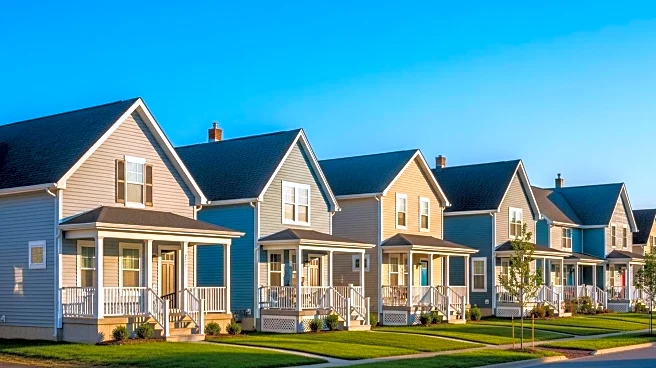What's Happening?
Green bus stops, featuring living roofs, are being implemented in various cities to combat urban heat and support pollinator populations. Originating in the Netherlands, these installations have spread to cities like Boston, which has fitted 30 bus shelters with green roofs. The initiative aims to provide habitats for native pollinators, reduce the urban heat island effect, and promote the integration of nature into urban environments. These bus stops are part of a broader movement to incorporate green infrastructure in cities, enhancing environmental sustainability and urban aesthetics.
Why It's Important?
The introduction of green bus stops represents a significant step towards sustainable urban development. By providing habitats for pollinators and reducing heat, these installations contribute to biodiversity and climate resilience in cities. They also serve as visible reminders of the importance of integrating nature into urban planning, potentially influencing public perceptions and encouraging further environmental initiatives. For city planners and environmentalists, these projects offer a scalable model for enhancing urban sustainability and improving quality of life for residents.
What's Next?
As more cities adopt green bus stops, there may be increased interest in expanding green infrastructure to other urban elements, such as rooftops and walls. This could lead to new policies and incentives to promote green building practices. Additionally, the success of these projects may inspire further research into the benefits of urban greening, including its impact on air quality, mental health, and community well-being. Collaboration between cities and environmental organizations could also drive innovation and the development of new green technologies.
Beyond the Headlines
The cultural and social implications of green bus stops are profound, as they challenge traditional urban design and promote a more harmonious relationship between cities and nature. By prioritizing ecological considerations in public infrastructure, these projects encourage a shift towards more sustainable and inclusive urban environments. They also highlight the potential for small-scale interventions to have a significant cumulative impact on urban ecosystems and community health.











